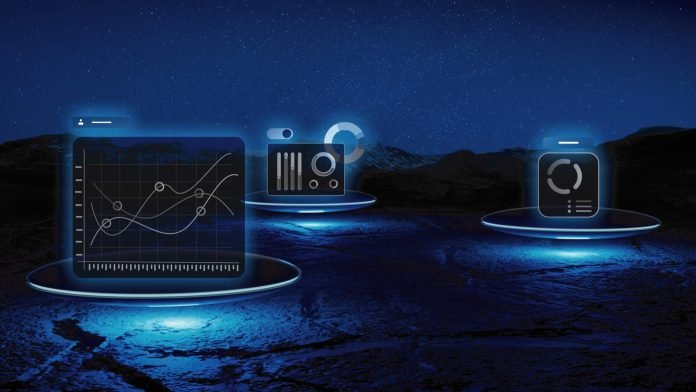Table of Contents
1. Advanced Recruitment Tools
1.1 AI-Driven Candidate Screening
1.2 Blind Recruitment Software
2. Employee Engagement and Retention
2.1 Diversity and Inclusion Analytics
2.2 Inclusive Communication Platforms
3. Training and Development
3.1 Virtual Reality (VR) Training
3.2 E-Learning Platforms
4. Inclusive Leadership
4.1 Leadership Dashboards
4.2 AI Coaching and Mentorship Platforms
Conclusion
Diversity, Equity, and Inclusion (DEI) should not only be seen as the right action to take in the current world of business and innovation but also as a beneficial function. DEI initiatives are greatly facilitated by technology because it offers unique solutions that may not be achievable through conventional methods. This article also discusses the role of technology in workplace DEI in a solution-focused manner, emphasizing the best practices.
1. Advanced Recruitment Tools
Recruitment is arguably one of the most vital aspects where technology manifests a strong influence on DEI. Modern recruitment technologies incorporate AI and ML features that eliminate bias in candidate selection and other processes.
1.1 AI-Driven Candidate Screening
Conventional recruitment procedures are hampered by systemic prejudice. The latter can be avoided by employing AI-driven candidate screening tools to review the candidate against predefined criteria to avoid bias. For example, Pymetrics is an application that employs neuroscience-based games to measure applicants’ cognitive and emotional performance and match it with the position’s demands devoid of discrimination.
1.2 Blind Recruitment Software
Blind recruitment software conceals applicant information such as their names, photos, or other demographics during the first phase of the selection. This helps in making sure that the candidates are compared only in terms of their skills and experience and not any other factors. Some examples of such tools include Applied and Blendoor, which contribute to fair hiring processes.
2. Employee Engagement and Retention
The utilization of technology is also important to enhance an organization’s culture, which will drive engagement and retention of diversity in the workplace.
2.1 Diversity and Inclusion Analytics
Some modern tools for business analysis, such as Visier and Culture Amp, help identify the diversity rate at different organizational levels. They assist in determining the gaps to be filled and the effectiveness of DEI strategies and progress made. The use of data empowers companies to make better decisions to improve equality and inclusion.
2.2 Inclusive Communication Platforms
Many of these tools, like Slack and Microsoft Teams, have features that allow for the inclusion of all the members in the communication process. These platforms accommodate features such as screen readers and voices, therefore allowing all employees to contribute fully. Further, they include facilities that allow employees to openly give out their opinions through messaging services such as anonymous feedback and surveys.
3. Training and Development
Employees must continually be trained for them to embrace the culture of diversity and inclusion in organizations. DEI training is well served by technology solutions that offer scalability and efficiency.
3.1 Virtual Reality (VR) Training
In addition, the realism provided by VR training means that it is possible to increase employee awareness and even make them feel the difficulties of their peers. For instance, Mursion and Vantage Point develop virtual reality training in which learners face situations based on prejudice, discrimination, and micro-aggression. These realistic experiences can go a long way in improving an individual’s awareness and sensitivity to DEI issues.
3.2 E-Learning Platforms
LinkedIn Learning and Udemy are some of the e-learning platforms that offer several DEI courses that employees can take whenever they want. These platforms have pull-offs, quizzes, and samples of real-life situations, which makes learning fun and productive. DEI training should be integrated into professional development programs so that companies remain dynamic and up-to-date.
4. Inclusive Leadership
A commitment from leadership is so important when it comes to the implementation of diversity and equality policies. Technology assists leaders in the implementation of inclusion culture change through leveraging of analytics and development of knowledge.
4.1 Leadership Dashboards
DEI-specific dashboards are designed to give leaders accurate and current information on diversity, perception, and participation. Business intelligence tools such as Power BI and Tableau can also be tailored to monitor relevant DEI metrics, such as KPIs. Having such data, leaders would be able to see where they need to make changes or take steps to ensure that the problems do not occur.
4.2 AI Coaching and Mentorship Platforms
Advanced technology solutions such as Butterfly. When it comes to coaching and mentorship services, AI and Torch have customized services to suit the various needs of an individual. These platforms employ data analytics for the matching of the mentors and the tutees, progress tracking, and feedback. This way, these organizations can foster the development of diverse and inclusive leadership that is capable of sustaining change.
Conclusion
The role of technology in the enhancement of diversity, equity, and inclusion in the workplace. Using better recruitment techniques, accessible communication channels, VR training, and leadership data analysis, companies can improve the representation of marginalized groups. Such technological solutions not only advance the causes of fairness and equity in the workplace but also contribute to the success of businesses by utilizing the capabilities of persons with diverse backgrounds. Integration of technology into DEI efforts is not just a fad but a necessity that any organization seeking to succeed in today’s business environment should adopt.
Explore HRTech News for the latest Tech Trends in Human Resources Technology.












